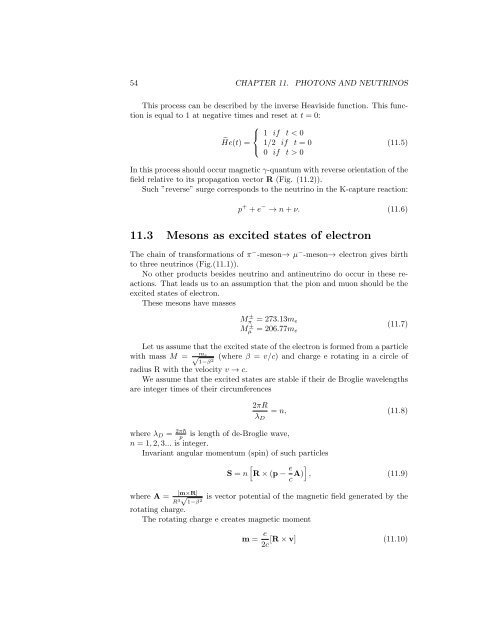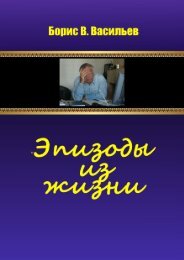VbvNeuE-001
Boris V. Vasiliev About Quantum-Mechanical Nature of Nuclear Forces and Electromagnetic Nature of Neutrinos
Boris V. Vasiliev
About Quantum-Mechanical Nature of Nuclear Forces
and Electromagnetic Nature of Neutrinos
Create successful ePaper yourself
Turn your PDF publications into a flip-book with our unique Google optimized e-Paper software.
54 CHAPTER 11. PHOTONS AND NEUTRINOS<br />
This process can be described by the inverse Heaviside function. This function<br />
is equal to 1 at negative times and reset at t = 0:<br />
⎧<br />
⎨ 1 if t < 0<br />
˜He(t) = 1/2 if t = 0<br />
(11.5)<br />
⎩<br />
0 if t > 0<br />
In this process should occur magnetic γ-quantum with reverse orientation of the<br />
field relative to its propagation vector R (Fig. (11.2)).<br />
Such ”reverse” surge corresponds to the neutrino in the K-capture reaction:<br />
p + + e − → n + ν. (11.6)<br />
11.3 Mesons as excited states of electron<br />
The chain of transformations of π − -meson→ µ − -meson→ electron gives birth<br />
to three neutrinos (Fig.(11.1)).<br />
No other products besides neutrino and antineutrino do occur in these reactions.<br />
That leads us to an assumption that the pion and muon should be the<br />
excited states of electron.<br />
These mesons have masses<br />
M π<br />
± = 273.13m e<br />
M µ ± (11.7)<br />
= 206.77m e<br />
Let us assume that the excited state of the electron is formed from a particle<br />
with mass M =<br />
me<br />
(where β = v/c) and charge e rotating in a circle of<br />
√<br />
1−β 2<br />
radius R with the velocity v → c.<br />
We assume that the excited states are stable if their de Broglie wavelengths<br />
are integer times of their circumferences<br />
2πR<br />
λ D<br />
= n, (11.8)<br />
where λ D = 2π<br />
p<br />
is length of de-Broglie wave,<br />
n = 1, 2, 3... is integer.<br />
Invariant angular momentum (spin) of such particles<br />
S = n<br />
[R × (p − e ]<br />
c A) , (11.9)<br />
where A =<br />
[m×R]<br />
R 3√ 1−β 2<br />
is vector potential of the magnetic field generated by the<br />
rotating charge.<br />
The rotating charge e creates magnetic moment<br />
m = e [R × v] (11.10)<br />
2c












